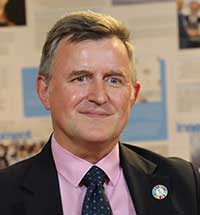[ad_1]
DAKAR, Senegal, Jul 25 (IPS) – The present Ukraine-Russia battle is dominating the worldwide media to the purpose of overshadowing longer protracted disaster that now not make headlines, however are nonetheless rife. Such is the case with the on-going Sahel disaster, one of many world’s most uncared for ones, the place acute poverty, the dramatic results of local weather change and rising armed conflicts have change into the norm for greater than a decade. A scenario additional exacerbated by the on-going COVID-19 pandemic.

The Sahel area, identified for its nomadic herders and resilient agriculture programs, spans 6000 km throughout a dozen of nations south of the Sahara desert, which embody Mauritania, Burkina Faso, Mali, Niger and Chad for a inhabitants of roughly 150 million. They share a standard geography, an identical local weather and lifestyle, however they’re additionally among the many poorest international locations on the planet, rating final within the Human Improvement Index.
In line with the UN Refugee Company, the area counts greater than 4.6 million individuals who have misplaced their residence right now, together with 2.7 million people who find themselves internally displaced and working away from battle and drought. They now not have a livelihood and must depend on humanitarian help for his or her survival.
Nevertheless, as very important as it’s, humanitarian help can not present a long-term resolution. Extra coordinated responses that deal with the underlying causes of the disaster are required. For that reason, the three UN businesses specialised in meals and agriculture, specifically the Worldwide Fund for Agricultural Improvement (IFAD), the Meals and Agriculture Organisation (FAO) and the World Meals Programme (WFP), have joined forces with the G5 Sahel, the regional organisation established in 2014 by the 5 most affected Sahel international locations.
Collectively and with the participation of Senegal, they’ve launched a US$180 million programme to enhance the livelihoods and financial technique of rural producers within the area and scale up profitable pilot actions. By it, a standard strategy is applied, capitalizing on rural growth work of previous many years, notably in supporting farmers and herders’ associations.
At IFAD we’ve a protracted expertise working with rural producers within the area, nevertheless, till now, we tended to implement programmes nationally, in settlement with nationwide governments. At present, IFAD is financing 20 programmes and initiatives in G5 Sahel international locations plus Senegal for a complete of US$1 billion.
With the existence of regional Sahel organisations, we will now focus our efforts at regional stage, figuring out that most of the points lower throughout nationwide borders, and work in partnership with all of the governments and worldwide businesses involved. That is for the good thing about the poorest, which is the aim of the joint Sahel programme, often known as the Regional Joint Programme Sahel in Response to the Challenges of COVID-19, Battle and Local weather Change (SD3C). Along with financing, IFAD is contributing its lengthy expertise in implementing agricultural initiatives at native stage, FAO is bringing its in-depth data and analysis in agriculture, and WFP its experience working in battle areas.
An estimated 25 million folks within the Sahel are nomadic pastoralists who’re more and more extra determined to seek out grazing areas for his or her cattle herds due to the impact of local weather change. As they broaden grazing areas into farming land, conflicts with sedentary farmers are on the rise resulting in a decline in meals manufacturing, when on the identical time the inhabitants is rising. In line with UN forecast, inhabitants within the Sahel ought to greater than double to 330 million folks by 2050. How will they eat if the difficulty of meals manufacturing and productiveness isn’t addressed right now by means of agriculture funding and satisfactory planning?
The programme appears to extend meals manufacturing and yields by means of climate-resilient agricultural practices, a key side in a area the place 80 % of agriculture is estimated to be affected by local weather change. With local weather consultants forecasting temperatures within the area, presently averaging 35 levels Celsius, to rise by not less than 3 levels by 2050, there’s much more urgency to implement local weather resilient measures right now.
Past the important thing problem of agriculture, the programme can be focussing on selling cross-border commerce and transactions and peace constructing at neighborhood stage. Ladies, who usually have restricted entry to land and finance, are making as much as 50 per cent of the programme’s contributors. About 40 per cent are younger folks, who face excessive charges of unemployment and obtain assist in launching productive actions to create jobs and generate first rate incomes. Landless folks and transhumant pastoralists additionally profit. The general technique is designed to fulfill the challenges of emergency, growth and peace following a speedy intervention strategy based mostly on the scaling up of current and environment friendly responses and approaches. Underneath implementation since 2021, this system will proceed as much as 2027 and broaden to different international locations within the Sahel area.
IPS UN Bureau
Follow @IPSNewsUNBureau
Comply with IPS Information UN Bureau on Instagram
© Inter Press Service (2022) — All Rights ReservedUnique supply: Inter Press Service
[ad_2]
Source link




